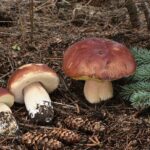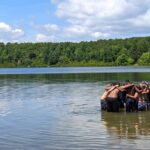Cultivating pollinator support at state parks
By Amy Marie Storey
In 2019, a plain mowed field in Oklahoma’s Sequoyah State Park transformed into an acre of wildflowers. The verdant space served both visitors and pollinators. It became home to deer and raccoons, butterflies and bees. Park adventurers wandered the mown paths, enjoying the extra experience before heading home. The author of this metamorphosis was Angelina Stancampiano, a state park ranger who received a grant to revitalize the space as a pollinator garden. Following a recent move to Wyoming, Stancampiano hopes to recreate this success in five new state parks, combining community engagement and conservation to write a little hope into the big picture story of pollinators.
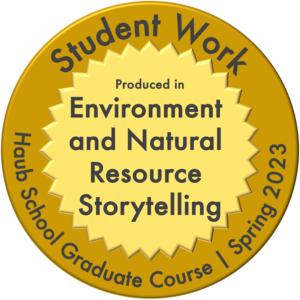
As it happens, the story is currently in a plot twist and it’s not a fun one; pollinators are in decline globally and although researchers have catalogued as much as possible about these declines, the causes are not yet defined. Conservation efforts of all sizes—from community courses on pollinator-friendly gardening to participation in community science initiatives—hold extra weight during this critical period. Recreation sites may seem an unlikely player in pollinator conservation, but this summer, Wyoming State Parks are taking up the challenge. With the agency’s focus on visitors and outdoor recreation, the trick was fitting pollinator conservation in with the parks’ people-oriented goals.
No comprehensive answers exist to guide long-term conservation of pollinators, including those in the western US. The once common western bumble bee (Bombus occidentalis), for example, once ranged down most of the US’s west coast, but today has disappeared from almost all its former range. A recent study showed Wyoming as one of the last strongholds for this species. Three other native Wyoming bumble bees are currently petitioned for listing under the Endangered Species Act alongside the western bumble bee. But a listing is just one, lengthy step of the conservation efforts. Data must be thoughtfully gathered and research conducted to uncover the causes of decline. Only then can conservation measures be designed to combat losses.
Meanwhile, patches of floral habitat like community and home gardens may be a lifeline to species in peril. According to Scott Schell, entomology specialist for the University of Wyoming Extension, supporting pollinators requires neither great skill nor great investment. “If you plant it, they will find it,” he says. He points out that people enjoy plants, too, and a garden can be a boon to human health. “I don’t see any downside in trying to help pollinating insects.”
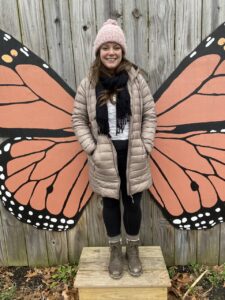
Stancampiano is one of two Wyoming State Parks interpretive rangers, whose missive is to ensure that park resources and experiences reach the visitors coming from within and beyond the state. This means helping people build connections with the land through tours and activities. The opportunity to combine her role with pollinator conservation arose when Wyoming State Parks District Manager Kyle Bernis tasked Stancampiano and her counterpart, Linley Mayer, with applying for a Hearts of STIHL grant. Run by outdoor power equipment manufacturer STIHL, this grant funds sustainability- and conservation-related projects in parks.
“The three prongs were education, conservation, and restoration. And it just asked you to pick one,” Stancampiano says of the grant’s prompt. “But I decided to try and target all three.” She proposed Wings Over Wyoming, a long-term program that aimed to provide positive experiences to park visitors and support pollinators at the same time. Stancampiano outlined an ambitious plan to plant pollinator gardens and hold educational workshops that promised to impact parks, visitors, and wildlife statewide.
Last fall, STIHL awarded Wyoming State Parks $20,000 for the proposed project. Over the winter, the Wings Over Wyoming team crystallized plans, ordered seeds, and hosted the first workshop, which taught participants to build small bee habitats. State Park staff planted seeds during the first two weeks of June and the gardens peaked in July and August.
Wings Over Wyoming is engaging visitors through five themed sites. Bear River State Park highlights bats and rebuilds bat boxes around the park. Edness Kimball Wilkins State Park nods to the active Audubon Chapter in nearby Evansville by focusing on birds. Keyhole State Park restored a plowed area to a pollinator patch optimized for beetles. Medicine Lodge Archaeological Site, a designated monarch butterfly stopover site, is focusing on butterflies. Finally, Curt Gowdy State Park’s focal creatures are bees. Each site hosts pollinator gardens and workshops to make “seed-bombs” (packets of biodegradable medium that crumble to release native seeds) and build “bee bungalows,” alongside other pollinator-focused activities. The program reached thousands of visitors throughout the summer.
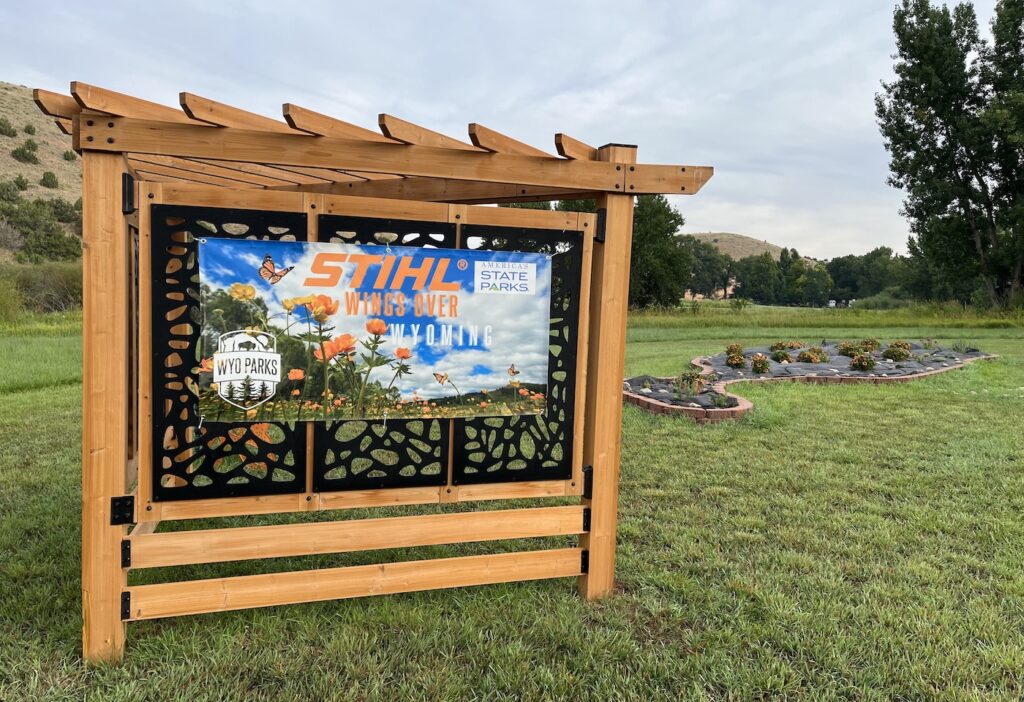
Stancampiano drew from the success of the Sequoyah State Park garden to strategically place pollinator gardens near campsites and other places where visitors linger. For example, “Once [visitors] get off the water for the day and have showered off and they’re making dinner, maybe the kids are going and reading all the pollinator signs and walking through that pollinator patch.”
Visitors to Wings Over Wyoming sites enjoy pollinator-friendly garden designs that also fit the landscape and its history. Bear River State Park’s garden beds are made with galvanized steel to pay homage to the automobiles of the historic Lincoln Highway nearby. Medicine Lodge State Park features raised beds in the shape of an elk, one of the park’s most iconic rock art images. Stancampiano sees Wings Over Wyoming as a way for visitors to connect to the land and its creatures. “We have public lands for us, but also for these plants and animals.”
Stancampiano is surrounded by collaborators who have provided practical support to help the program accomplish its lofty goals. The Wings Over Wyoming committee includes volunteers from across the state, colleagues from the Wyoming Outdoor Recreation Office, park superintendents, and Stancampiano’s fellow interpretive ranger. This team-level planning may be the perfect counterbalance to Stancampiano’s high aspirations. “[I say], let’s do the extreme, and then the superintendents [say], ‘Woah, woah, woah. How much watering time is that going to need and how much time will it take staff to construct this building?’ . . . So by working together as a team, I think we have been able to hopefully hash out any issues before they arise,” she says.
Public education programs like Wings Over Wyoming can create long term results by inspiring communities to support pollinators and by cultivating the interest that already exists for insects and pollinators. When it comes to gauging interest, entomologist Schell may have the best seat in the house. “Almost everybody has some sort of striking memory of an insect event,” he says. As the go-to diagnostician for arthropods, Schell teaches public workshops, supports field trips for young learners, and answers as many questions as he can. “I don’t expect everybody to become an insect lover per say,” says Schell, “but just recognize their value.”
Even small actions like including a flowering plant in landscaping or contributing data to a pollinator study can have far-reaching effects. Will Janousek, a research scientist for the United States Geologic Survey and coauthor of a recent paper modeling occupancy of the western bumble bee, used information from a community science survey to show changes in the range of this bee and to predict continued range reduction in worst- and best-case action scenarios. “A portion of [the 14,500 surveys used in the study] comes from a variety of community science programs,” Janousek says. “People have the opportunity to submit data from their backyards.” Community-powered studies like this end up supporting petitions for federal protection, informing the decisions of land managers, and providing foundational research for future studies.
While it may be hard to measure exactly how Wings Over Wyoming gardens impact nearby pollinator populations, Stancampiano points out, “Anything that we’re doing is above and beyond what we have been doing [previously], so I see any of it, all of it, as a positive effect.” If Wings Over Wyoming succeeds, it will set an example for public education, equip Wyoming State Parks visitors to conserve pollinators, and add one more piece in the effort to restore these critical creatures. “For me,” Stancampiano says, “the best possible outcome we could have would be folks who came and visited one of our sites and went home and decided to change part of their manicured lawn into a pollinator patch.”
Amy Marie Storey is a master’s student with the Zoology and Physiology Department at the University of Wyoming. Her interest in ecology and entomology spills into her master’s work studying the parasites of wild bees in the West.
Header image: Blanket flowers bloom in a pollinator garden designed for butterflies at Medicine Lodge State Park in Wyoming. Photo by Emilene Ostlind.

